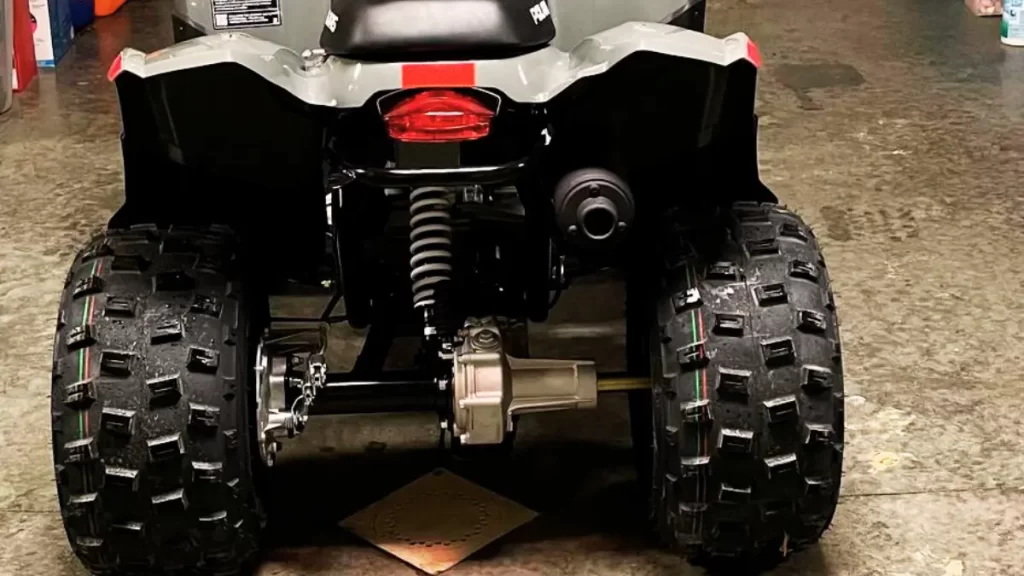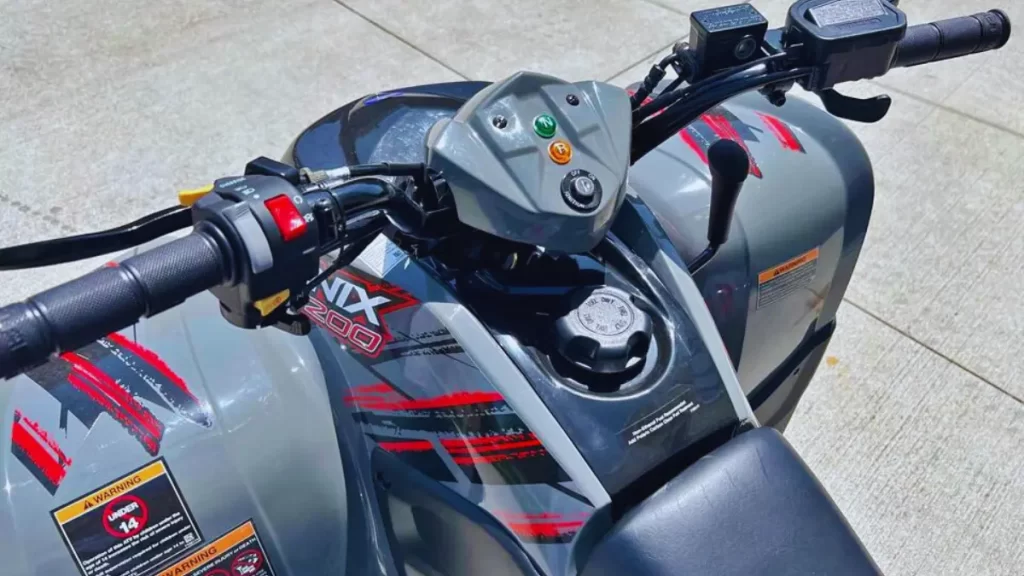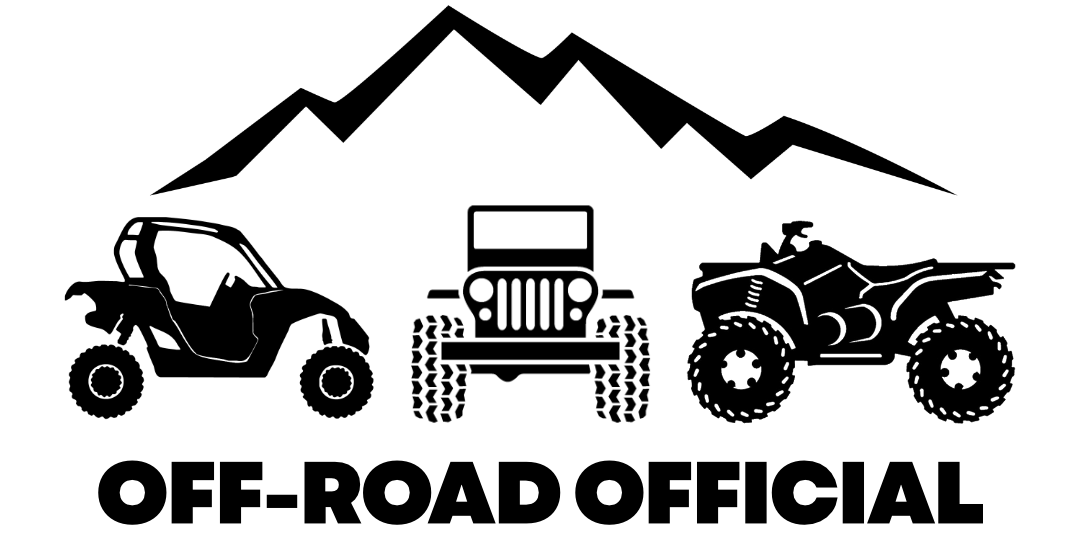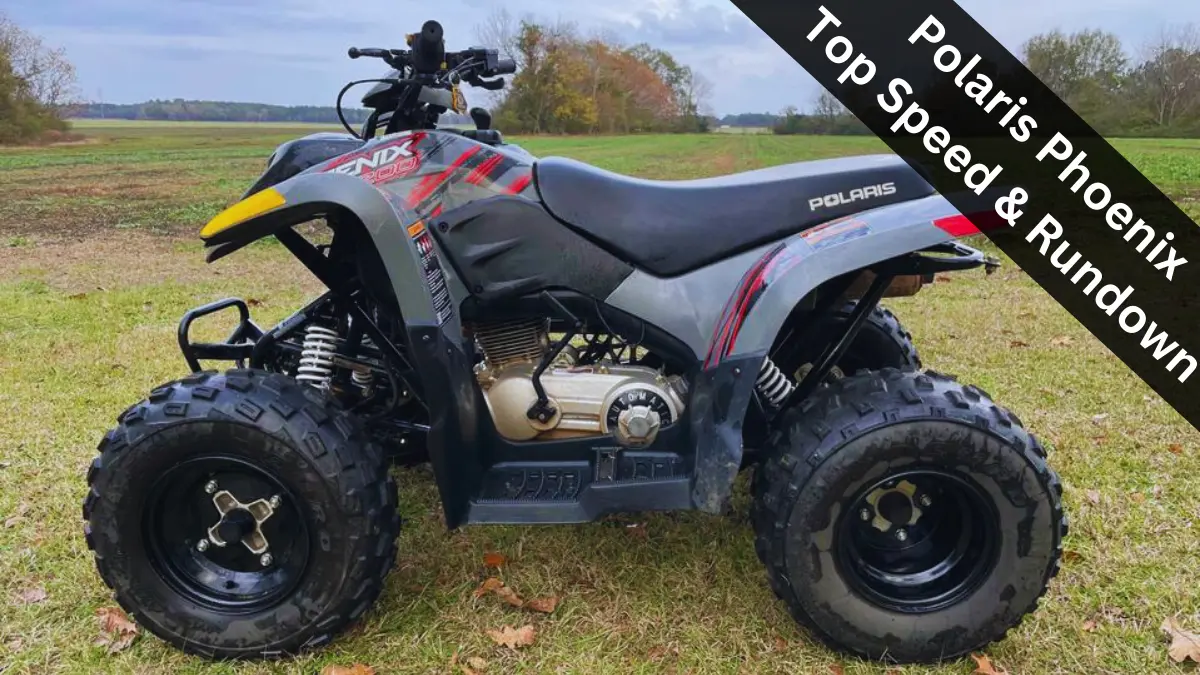As the sportiest of the Polaris youth ATVs, the Phoenix 200 is designed to maximize the fun for teenage riders ages 14 and up.
While this model makes for a good transitional quad for riders who have some experience but are not quite ready for a full-size Polaris ATV, it is equipped with some adjustable safety features that serve to limit the speed for riders of any experience level.
So how fast does a Polaris Phoenix go?
And what are some of the best and worst qualities of this model that you should consider before buying one?
This guide will review the following:
- Key features
- Build quality
- The good – what owners love
- The bad – what owners don’t love
- How well it performs
- How fast it goes
- The two speed limiter features and how to adjust them
- A few ways to increase the top speed even more
Polaris Phoenix Key Features, Build Quality & Performance
Engine & Drivetrain
Powered by a 196cc single-cylinder engine, the Phoenix 200 puts out a good bit of power for its size.
But it is known to take a little time to build up power, which isn’t a problem on more level terrain, but can make climbing steep hills slower than you might like.
Throttle response can be a little slow, and the amount of low-end torque it offers isn’t all that impressive.
The fully automatic CVT transmission is convenient and helps riders focus on riding while not worrying about manually shifting gears or using a clutch.
It offers forward, neutral, and reverse gears with the reverse coming in quite handy for turning around on trails or getting unstuck.
A shaft drive delivers power to the rear wheels, with this machine only offering 2WD, which is standard for this class range.
Starting is electric, with a handle-bar activated choke for quick and easy starts.
| Engine Type | 4 Stroke, SOHC |
| Cylinder Arrangement | Single Cylinder |
| Displacement | 196 cc |
| Engine Cooling | Air-Cooled |
| Fuel Delivery | 22 mm Carburetor |
| Fuel Capacity | 2.5 US Gallons |
| Drive System | 2WD, Shaft Drive |
| Transmission Type | Fully Automatic CVT |
Suspension

The Phoenix’s suspension system is one of the overall strengths of this model, with a Dual A-Arm setup in the front and a monoshock swingarm in the rear.
This combination offers good damping and a smooth ride in most terrains, with the shocks doing a good job of soaking up holes or bumps while riding.
And both front and back shocks do offer preload adjustment so that riders can find the right fit for their riding style.
The suspension also offers some of the best wheel travel among its competitors, with 7 inches up front and 6.5 inches in the rear. Only the Yamaha Raptor 250 is better in this regard.
A ground clearance of 5.7 inches also gives the Phoenix an advantage when trail riding, with a good bit of room to clear obstacles like rocks and logs in the trail.
| Wheelbase | 45 inches |
| Ground Clearance | 5.7 inches |
| Front Suspension | Dual A-Arms |
| Rear Suspension | Monoshock Swingarm |
| Travel | Front – 7 inches, Rear – 6.5 inches |
Tires & Brakes
The Phoenix comes equipped with 21 x 7-10 Duro tires in front and 20 x 9-10 Duro Tires in the rear.
These tires provide good traction in any terrain and work well on the trail or on pavement.
For those looking to add just a bit more top-end speed, an upgrade to 22-inch tires in the front and 21-inch tires in the rear will be a good start.
The brakes are split between hydraulic disc brakes up front and mechanical drum brakes at the rear.
The braking system is controlled by handle-bar mounted levers and provides plenty of stopping power.
| Front Tires | All Terrain, 21 x 7-10 (Duro) |
| Rear Tires | All Terrain, 20 x 10-9 (Duro) |
| Front Brake Type | Hydraulic Disc |
| Rear Brake Type | Mechanical Drum |
Dimensions
As a bigger model compared to some competitors in the 250cc class, its overall size enables the Phoenix to fit a variety of different body sizes and types, and provides room to grow for younger riders.
But it’s still plenty compact enough to be able to traverse the tightest trails and is quite agile while doing so.
At 420 lbs it’s on the heavier side for its size and offers plenty of weight to provide stability for full-sized riders, but is not too heavy to be able to handle for smaller teens and adults.
| Length | 65 inches |
| Width | 42 inches |
| Height | 42 inches |
| Seat Height | 32 inches |
| Dry Weight | 420 lbs. |
What Owners Love
- It’s essentially in a class all by itself at 200cc, with only a few other quads such as the Kayo Bull 200 and Kayo Jackal 200 available.
- Makes a great transitional ATV for youth who aren’t quite ready for a full-size ATV yet.
- Offers safety features such as an adjustable speed limiter and a safety flag.
- Electric starter makes for quick and easy starting with the push of a button.
- Fully automatic CVT cuts out the need for manual gear changes.
- It’s big enough and powerful enough to comfortably seat and carry a wide range of body sizes.
- Offers plenty of room for younger riders to grow and still be able to comfortably ride the machine.
- It’s compact enough to traverse tight trails and make handling easy even for smaller riders.
- Full footwells provide good grip and stability to keep the legs onboard at all times.
- Plenty of suspension travel for a comfortable ride.
What Owners Don’t Love
- Engine is slightly underpowered and may struggle on steep hills without momentum behind it.
- Throttle response is a little delayed due to the automatic CVT.
- Carbureted, which can lead to issues with hard starting and rough idling, especially in cold weather.
- Fuel tank only holds 2.5 gallons, so fill-ups will be rather frequent.
- A bit on the heavier side weight-wise, which can strain the already under-powered engine.
- Lighting is halogen and not LED, which aren’t very bright when riding at dusk or in the dark.
- The Polaris Phoenix is only slightly cheaper at $4,499 than some of the higher performance sport ATVs in the 250cc class.
Polaris Phoenix 200 Top Speed
Powered by a 196 cc single-cylinder engine and automatic PVT transmission that includes Reverse, the Polaris Phoenix 200 top speed is 38 mph.
Like the Polaris RZR 170 and the Polaris RZR 200, the Phoenix comes equipped with some safety features for younger riders.
So it will take some adjusting to reach 38 mph as the initial top speed is only 20 mph due to the existence of two speed limiter features.
Adjusting The Speed Limiters
As this model is intended for teens who likely have some experience riding, it can be a little disappointing to find that it will only top 20 mph out of the box and may only crawl up steep hills.
Fortunately, this is due to a pre-installed speed limiter that can be easily adjusted to enable the quad to double this top speed.
This speed limiter consists of two different parts for limiting the speed:
- There is a speed limit screw that controls how far the throttle can open and affects the Phoenix’s speed between 0 and 30 mph.
- There is also a speed control bracket that affects the speed from 31 to 38 mph.
Remove The Speed Limit Screw
The speed limit screw is located on the throttle box and can be adjusted by loosening the jam nut and turning the screw outward.
The throttle lever will stop against the speed control bracket at its maximum setting, offering the Phoenix a top speed of 30 mph.

Remove The Speed Control Bracket
To enable the max speed, simply remove the bracket fastener that anchors the speed control bracket to the throttle assembly, and take off the bracket.
This will have your Phoenix 200 able to reach the top advertised speed of 38 mph.
If you’re anything like some other owners after making this adjustment, you may even be able to reach 40 mph depending upon the terrain.
Making The Polaris Phoenix Even Faster
If the top speed of 38 mph after adjusting the speed limiters still isn’t enough for you, there are ways to increase it even more with some modifications.
This can be achieved by upgrading the intake and exhaust systems, along with jetting the carburetor.
Upgrade The Intake System
The air intake system consists of components such as the air filter and airbox.
These components work together to funnel clean air to the engine so that it can breathe, which also affects the amount of fuel that can be fed to the engine.
By upgrading these components, you’ll enable more clean airflow into the engine.
The more air in and out, the more power and speed the engine can generate, which is where upgrading the exhaust system comes into play as well.
Upgrade The Exhaust System
By upgrading the stock exhaust system you’ll provide a more efficient exit for this added airflow once it has been used up.
This overall increase in airflow in and out should result in increased horsepower, torque, and speed across all throttle levels and RPM levels.
Not to mention an upgraded exhaust will also provide your Phoenix with a more aggressive growl when riding.
Re-Jet The Carburetor
If you modify the airflow to a carbureted machine such as the Polaris Phoenix by way of an upgraded intake and exhaust, you’ll need to be sure and re-jet the carburetor to account for this.
Re-jetting the carb will increase the fuel flow needed to account for the added airflow in order to keep the air to fuel ratios optimal.
While this re-jetting is essential in ensuring you don’t damage your engine after making modifications, it also ensures that you maximize the full power and speed potential of your quad after putting your hard-earned money into any upgrades.
Conclusion
While the Polaris Phoenix 200 top speed is 38 mph, owners will find this model won’t quite get there initially due to the speed limiter that minimizes its speed and power out of the box.
But with some simple adjustments, this quad will top out at a speed that is both enjoyable and safe for young riders of various experience levels.
And it makes for an excellent transitional quad for younger or smaller riders who don’t want or need a full-size ATV.
For some quads similar to the Polaris Phoenix 200, check out the following guides before you go:


